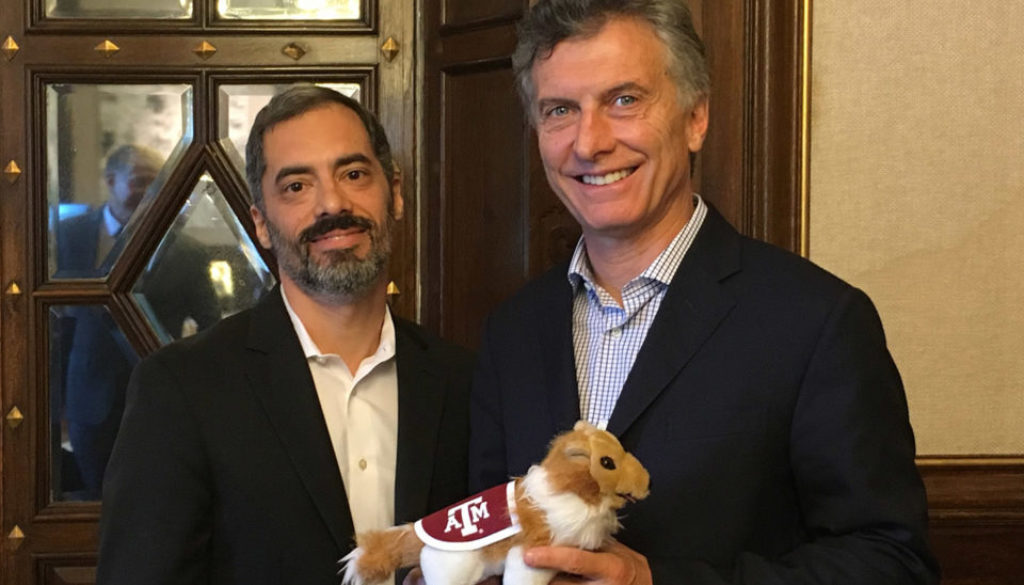MACRI MEETS MACRI: Texas Astronomers Meet Argentine President to Discuss Telescope
BUENOS AIRES —
Texas ties forged seven years ago during the International Year of Astronomy have taken two Lone Star State astronomers global in a quest for a new Argentina-based telescope to aid in the hunt for LIGO-based evidence beyond gravitational waves — specifically, that of neutron star mergers.

Lucas Macri (right) poses with University of Texas Rio Grande Valley astronomer Mario Díaz outside La Casa Rosada in Buenos Aires. (Credit: Lucas Macri.) 
Lucas Macri (right) with Chief of Staff Marcos Peña. (Credit: Lucas Macri.)


